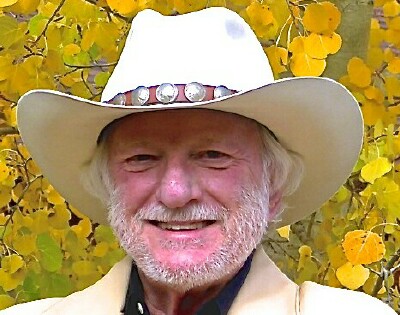"The Revolutionary Evolution of the Media" -- Chapter 4, Part 2 -- Paul Maxwell

Chapter 4 -- Part 2
Earlier in this chapter, we were printing indulgences. Ramifications of that were just around the corner. But first, a guy named Christopher Columbus landed in the Portuguese Azores with news of Atlantic crossings. He, of course, was headed for Barcelona when he was blown off course. Getting out of the Azores took a little time; then, as bad luck would have it, he had to take shelter in Lisbon. There he was summoned to the King who had refused to back Columbus. Smartly, though, Columbus had produced a report that fit neatly into an 8-page pamphlet. It was a hit.
Columbus hadn’t found Asia. He made two more transatlantic voyages touting his exploits but on the third return, he arrived in chains. No gold yet. No spices. And chaos in the settlements. And from a news standpoint, the Portuguese commercial exploits around Africa’s Cape dominated as they imported spices in 1499 and 1501.
But the big news at the beginning of the 16th Century became Europe’s first mass-media event: the Protestant Reformation.
It started on All Saints Eve, October 31st, 1517 when an mid-level academic monk named Martin Luther reputedly tacked 95 Theses on the Power and Efficacy of Indulgences on the door of the All Saints church in Wittenberg, Saxony in what is now Northern Germany. He had written the theses in Latin and, because he was a bit of maniac about indulgences, he had sent copies to the Bishop of Mainz and the Archbishop of Magdeburg. From there, some intellectuals at universities had them printed and distributed across Northern Europe.
The Dominican priest Johann Tetzel covered Northern Germany selling indulgences and singing, "As soon as the coin in the coffer rings, the soul from purgatory springs." Luther preached that only God can forgive sins … and God doesn’t charge anything but faith.
Luther got famous.
The Church reacted slowly. How could something from a little town in Saxony no one had ever heard of create something of interest to Rome?
Luther got more famous. His arguments against the commercialization of the Church were printed and re-printed and distributed all across Europe. By 1518, Luther was Germany’s most printed author. The Theses and other writings were printed in German making them easily readable by more than academics and churchmen.
Score another move toward mass media.
(As I’m sure you’ve noted, this book is often about how media has changed because of changes in content into the vernacular or modified time and space … or how long and/or how far media moves in order to get to the customer.)
Luther was incensed with the Church demanding money in order to forgive sins. The 86th Theses asked, "Why does the pope, whose wealth today is greater than the wealth of the richest Crassus, build the basilica of Saint Peter with the money of poor believers rather than with his own money?"
In 1520 when Pope Leo X issued a rebuttal and excommunicated Luther the following year, the church in Wittenberg was already running “Lutheran” services instead of Catholic masses. Emperor Charles V backed the Pope.
Luther had a patron in the ruler of Saxony, Frederick the Wise. Frederick recruited a well-known artist, Lucas Cranach who became a friend of Luther’s, to create woodcut portraits of the monk … the portraits wound up gracing the covers of most of Luther’s books … that made him famous.
When Charles V opened the Diet of Worms to formally confront Luther and validate the excommunication, he was shocked when Luther arrived to cheering masses embracing him in a frenzy.
An earlier diet, pre-publicity a century earlier, resulted in the killing of the reformer Jan Hus. This time, there was no way to do anything to Luther. Charles V was afraid to lock Luther up and throw away the key, because he was too famous. In fact, Luther was among the first “brands.” This is probably the first time “media” changed everything. Content plus better conduits (short, easily printed, distributed and digested pamphlets called Flugschriften) plus mass readership created a new political – and in this case religious – constituency.
Luther’s challenge to the Church changed publishing almost as much as it changed the Church. Theological discussions became political. The Theses were like a firestorm. Protest songs were written, performed and published as broadsheets. Luther became the first media brand.
Next week: Chapter 4, Part 3 -- Even More in Print
In an almost 50-year career writing and reporting on media, Paul S. Maxwell started and/or ran some 45-plus publications ranging from CATV Newsweekly to Colorado Magazine to CableVision to Multichannel News to CableFAX and The BRIDGE Suite of daily newsletters and research publications. In between publishing stints, Maxwell served as an advisor and/or consultant to a number of major media companies and media start-ups including running a unit of MCI and managing a partnership of TCI and McGraw-Hill.
Send any and all criticisms, suggestions, rants, threats, corrections, etc. to him at cablemax@mac.com. He has a new Web site coming soon!
Check us out on Facebook at MediaBizBloggers.com
Follow our Twitter updates at @MediaBizBlogger
The opinions and points of view expressed in this commentary are exclusively the views of the author and do not necessarily represent the views of MediaBizBloggers.com management or associated bloggers. MediaBizBloggers is an open thought leadership platform and readers may share their comments and opinions in response to all commentaries.


